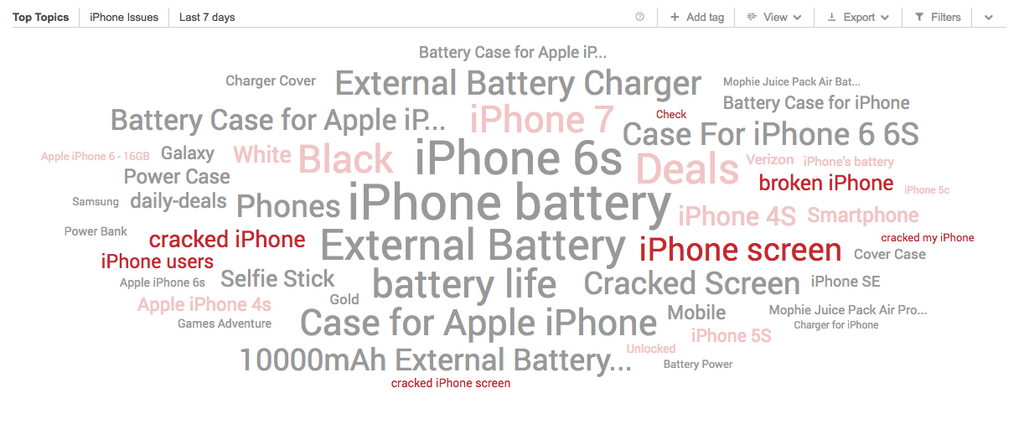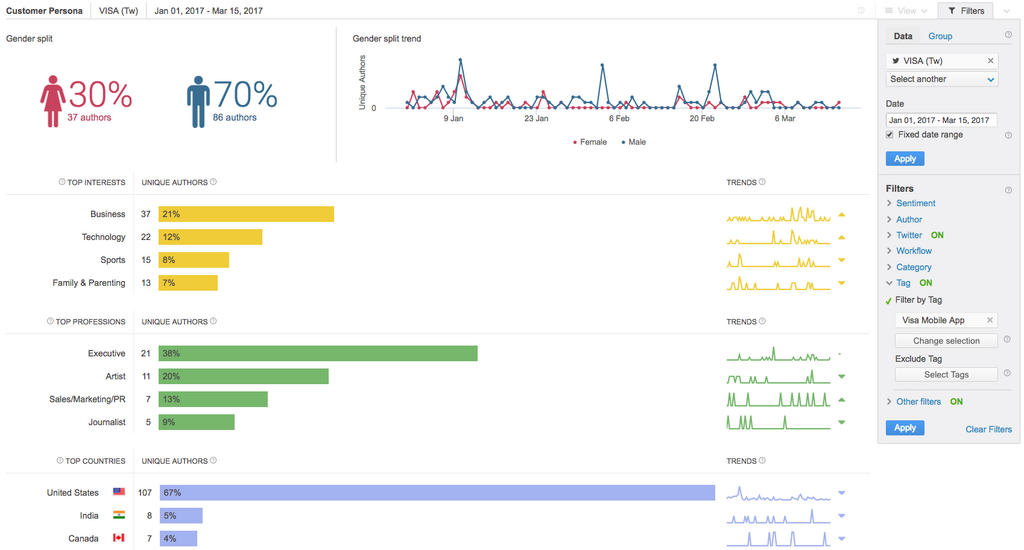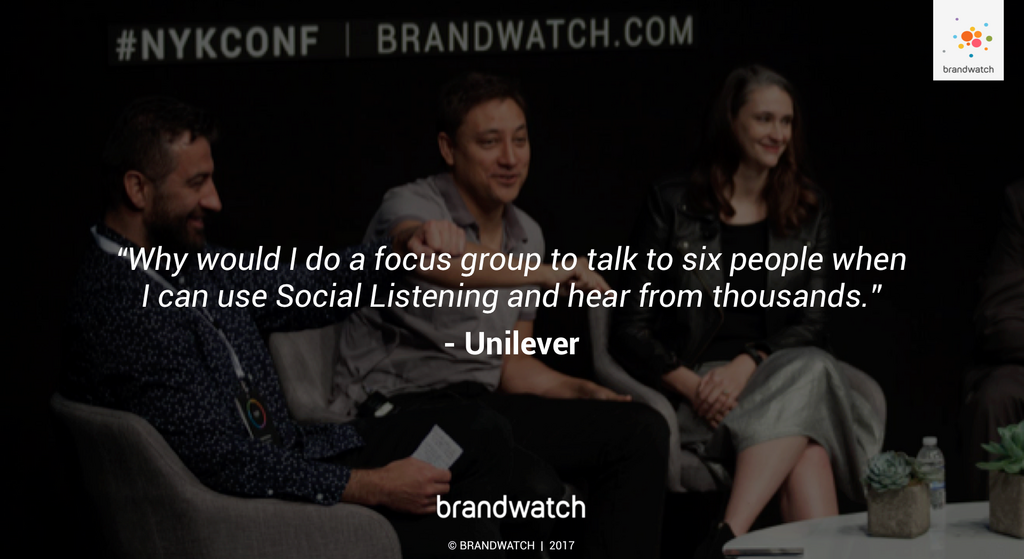10 Social Listening Tools and Who They’re Best for
By BrandwatchJul 14
Join us and boost your social media potential with our data-led event
Published March 17th 2017
The term user experience (UX) refers to every step of how a person interacts with a service or product. This can include factors like how easy someone finds an app’s interface, to the feelings evoked when looking at a logo.
Research into the UX of products goes on to influence the design, functionality, and every subsequent iteration of a product.
In addition to its impact on design, social media shows that UX is currently championed as the key to everything from business success during digital transformation to surviving the adblockpocalypse.
So it’s clear why many companies have increased UX testing every year for the past four years.

The richness of social data can answer many of the questions UX researchers aim to answer throughout product development. As a strategy, social intelligence has developed beyond measuring likes and followers.
With the right analytics tools and the breadth of data available from online channels, using social media for UX can provide vital insights around every stage of a user’s journey.
At the start of a product development cycle, the goal of UX research is to get a sense of current gaps within their market and to imagine what possible solutions would look like.
Before a design idea or product release is put on paper, UX researchers are already hard at work.
A key part of this stage of UX research is revealing the needs of users within your market and what specific problems those users are experiencing. Social media is a perfect source for identifying specific experiences that a new product or feature could address.
The Apple researchers charged with the ideation of the next iPhone can look no further than the themes in negative social media conversations about previous iPhones.
According to the data, the iPhone battery might be a solid place to dive into product research.
 Once you identify a problem your company can solve, the next step is to understand who your users are.
Once you identify a problem your company can solve, the next step is to understand who your users are.
In order to design products perfect for their users, UX researchers build user personas. Each persona represents a single prototypical customer— her likes, her concerns, her fears and behaviors within and outside the industry— based on data points from consumer research.
From there, companies can piece together the customer journey from the mindset of the deep, complex customers they have.
This screengrab from our demographic dashboard in Analytics shows typical information included in a persona. Using this data, a researcher on Visa’s mobile design team might try to consider the desires and limitations an American executive and techy might experience with a financial services app.

Despite their purpose of forcing companies to dig deeper into their customers, companies risk oversimplifying their customer base when reducing to a few “typical users”. When planning stakeholder interviews or monitoring your online audience, it’s easy to succumb to those biases.
If you’re PepsiCo, would you initially guess how important music-lovers would be to your products?
In our 2016 Social Outlook report, we looked at people talking about food and beverages companies.
Unsurprisingly, among the top interests were “food & drinks”. However, compared to the other industries, more people who discussed food companies were interested in music.
 Going beyond your product’s obvious users can reveal important but unexpected consumer groups and experiences that might be underserviced.
Going beyond your product’s obvious users can reveal important but unexpected consumer groups and experiences that might be underserviced.
Let’s say that the goal of your product was to make purchasing a car quicker and easier.
Does your current idea accomplish that goal? Are your users experiencing some unexpected negative feelings you hadn’t considered? At the last stages of product development, UX researchers have to review these questions based on human feedback.
Hosting a focus group is a common UX technique to get feedback on ideas. However, the cost of a 10-person focus group can easily end up being tens of thousands of dollars.
Companies with many products, diverse customer bases, or smaller R&D budgets might benefit from other ways to test and review their products.
 One bonus of social media for UX testing is the constant availability of honest, customer feedback. As every company with a social page knows, social media is especially good for learning what customers don’t like. For the teams tasked with testing and reviewing a product, they’ve got to take advantage of social media for UX.
One bonus of social media for UX testing is the constant availability of honest, customer feedback. As every company with a social page knows, social media is especially good for learning what customers don’t like. For the teams tasked with testing and reviewing a product, they’ve got to take advantage of social media for UX.
There will always be some parts of a user’s interaction with a product or company that social media data can’t fully reveal. However, social research can provide invaluable insights throughout the discovery, exploration and review stages of user experience testing.
Quicker, cheaper, and at a greater scale than other research methods, social research should be in every UX toolkit.
Offering up analysis and data on everything from the events of the day to the latest consumer trends. Subscribe to keep your finger on the world’s pulse.
Consumer Research gives you access to deep consumer insights from 100 million online sources and over 1.4 trillion posts.
Existing customer?Log in to access your existing Falcon products and data via the login menu on the top right of the page.New customer?You'll find the former Falcon products under 'Social Media Management' if you go to 'Our Suite' in the navigation.
Brandwatch acquired Paladin in March 2022. It's now called Influence, which is part of Brandwatch's Social Media Management solution.Want to access your Paladin account?Use the login menu at the top right corner.



